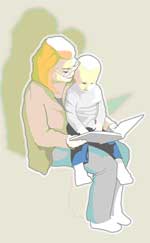Pediatric Environmental Health Toolkit Training Module

Introduction
This site provides information about the Pediatric Environmental Health Toolkit (PEHT) Training Module and how to register for free continuing education credits. To begin your training, please visit the PEHT training module.
This training supports the use of the PEHT materials found at http://www.psr.org.
More information about the Toolkit and the online training follows.
Who is this training for?
This online training was developed for pediatric health-care providers, health educators, and other health professionals interested in environmental health anticipatory guidance for pediatric patients and their parents or guardians.
What is this training about?
This interactive Web-based module introduces users to the basics of environmental health and explains the purpose and best use of Toolkit materials. It offers health-care providers detailed examples about how to best deliver anticipatory guidance on a range of environmental health issues, especially during well-child visits.
Case examples explore the unique biological factors and exposure patterns that make children especially vulnerable to toxic chemicals. These will help pediatric health-care providers recognize possible environmental causes for some of the illnesses they might treat in their daily practice, as well as potential environmental exposures to be avoided.
The module discusses current pediatric medical practices related to environmental health and provides resources for delivering anticipatory guidance during well-child visits. Anticipatory guidance is designed to help patients avoid or mitigate exposures to toxic substances. Features include how to take an environmental history and hyperlinks to additional learner resources, including the Agency for Toxic Substances and Disease Registry’s (ATSDR) Case Studies in Environmental Medicine (CSEM) and ToxFAQs™.

What is in the PEHT and how can I access the Toolkit materials?
The PEHT provides in-depth information about preventing exposures to toxic substances. It includes laminated desk and pocket reference guides for providers, bilingual patient handouts including “Prescription for Prevention” sheets, refrigerator magnets, and two colorful, bilingual posters for clinics or exam rooms. Toolkit materials can be downloaded at http://www.psr.org.
What is in this section?
What is in this section?
A brief overview of what is in a section.
A brief overview of what is in a section.
Objectives
Objectives
Statements that reflect intended learning outcomes.
Statements that reflect intended learning outcomes.
Content
Content
Information and examples that support the training objectives.
Information and examples that support the training objectives.
Resources
Resources
Sources of additional information on section topics. Most resources listed at the end of each section are substance specific. A complete list of resources will be found at the end of the training.
Sources of additional information on section topics. Most resources listed at the end of each section are substance specific. A complete list of resources will be found at the end of the training.
References
References
References for the training content are hyperlinked when possible.
References for the training content are hyperlinked when possible.
Self Check
Self Check
The questions in these quizzes are similar to those found in the post test and will serve as a good review.
The questions in these quizzes are similar to those found in the post test and will serve as a good review.
Why was this training developed?
ATSDR and the Pediatric Environmental Health Specialty Units (PEHSU) it sponsors are committed to protecting children from environmental health threats. This commitment propelled ATSDR’s Division of Toxicology and Environmental Medicine (DTEM), the Greater Boston Physicians for Social Responsibility (PSR), and the University of California-San Francisco PEHSU to develop an environmental health anticipatory guidance training module. This training module is based on PSR’s PEHT, which has been endorsed by the American Academy of Pediatrics. It will introduce users to environmental health, instruct pediatric health care providers in the use of the Toolkit, and discuss the best methods for delivering environmental health anticipatory guidance in the clinical setting.


